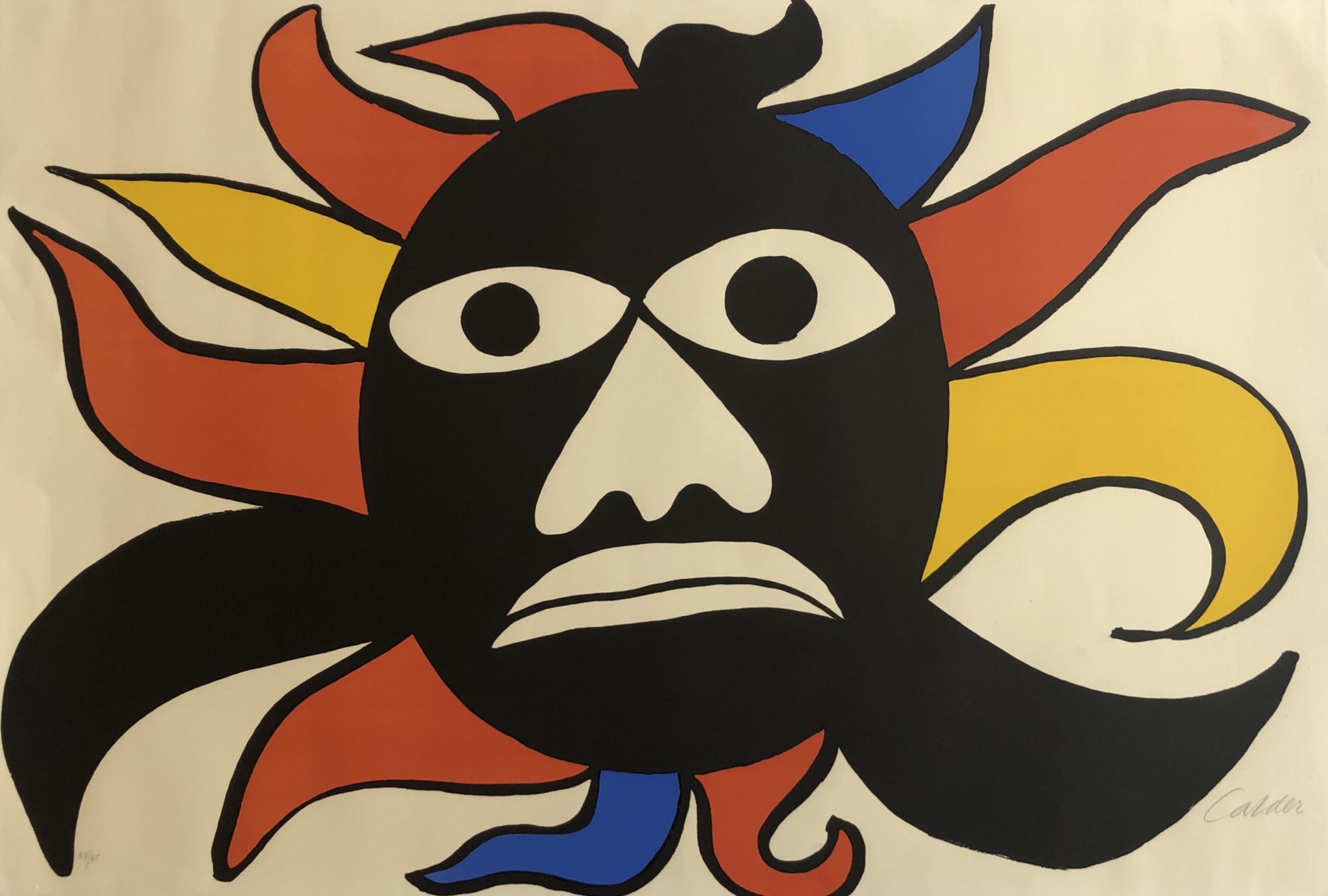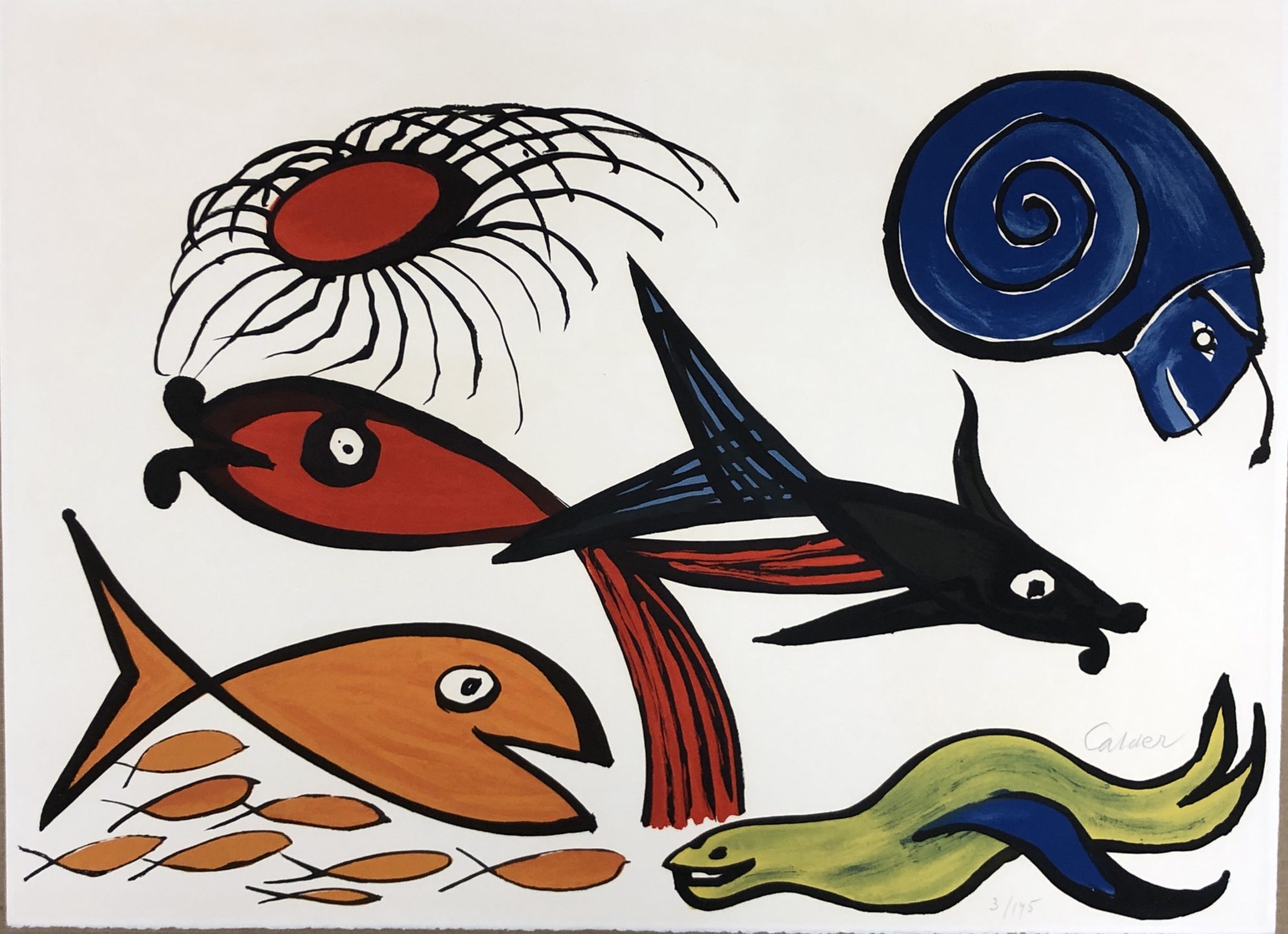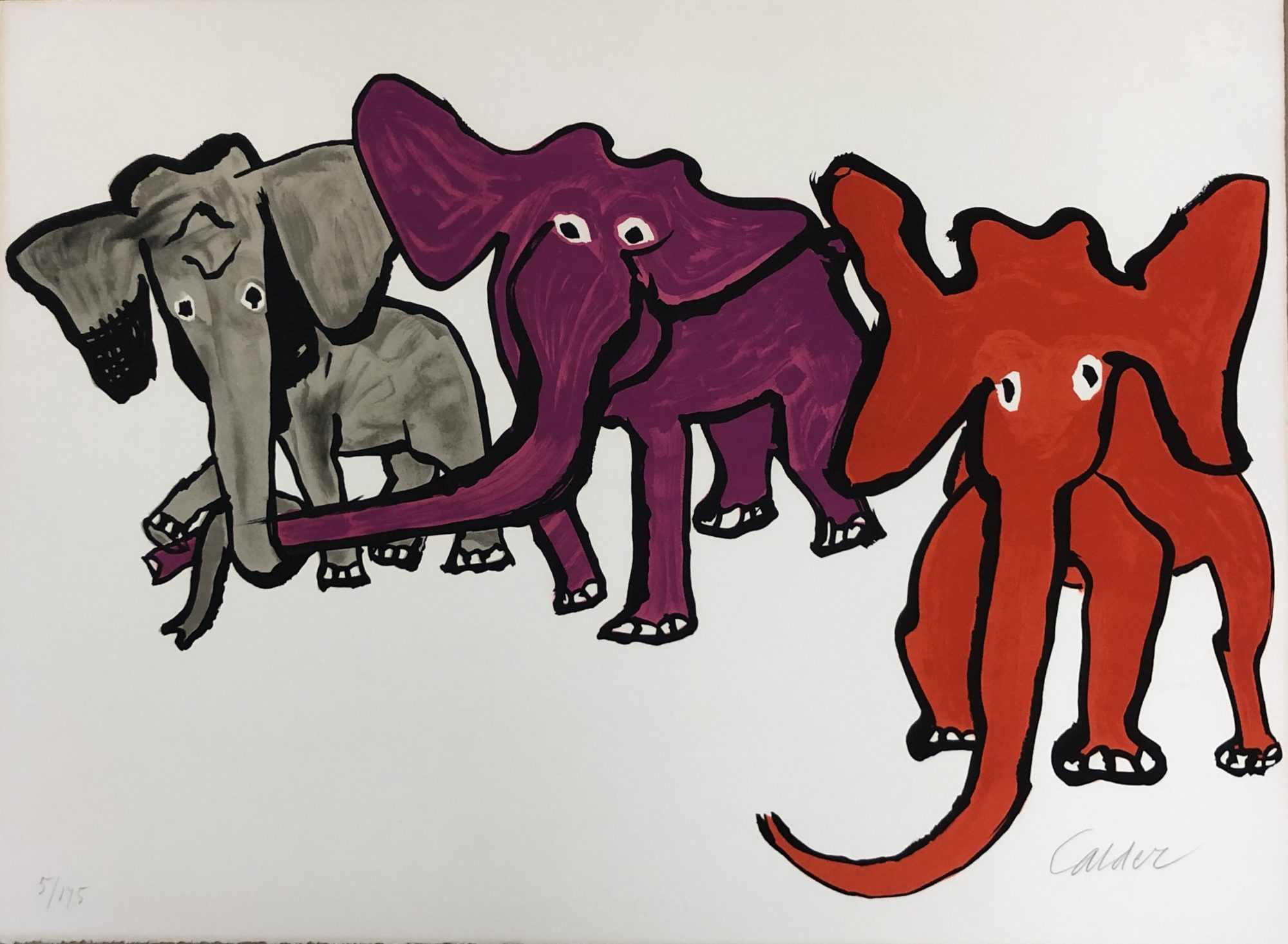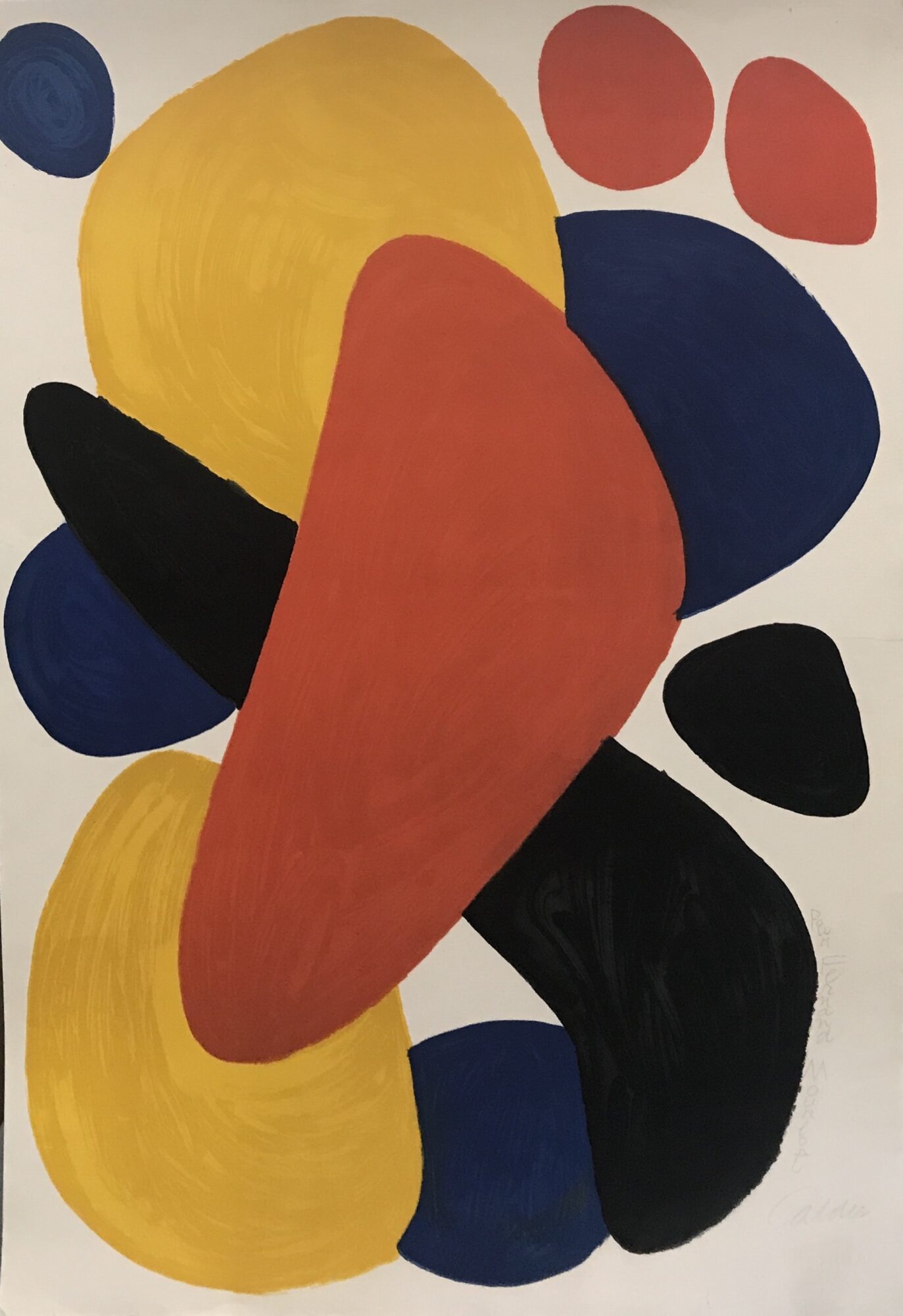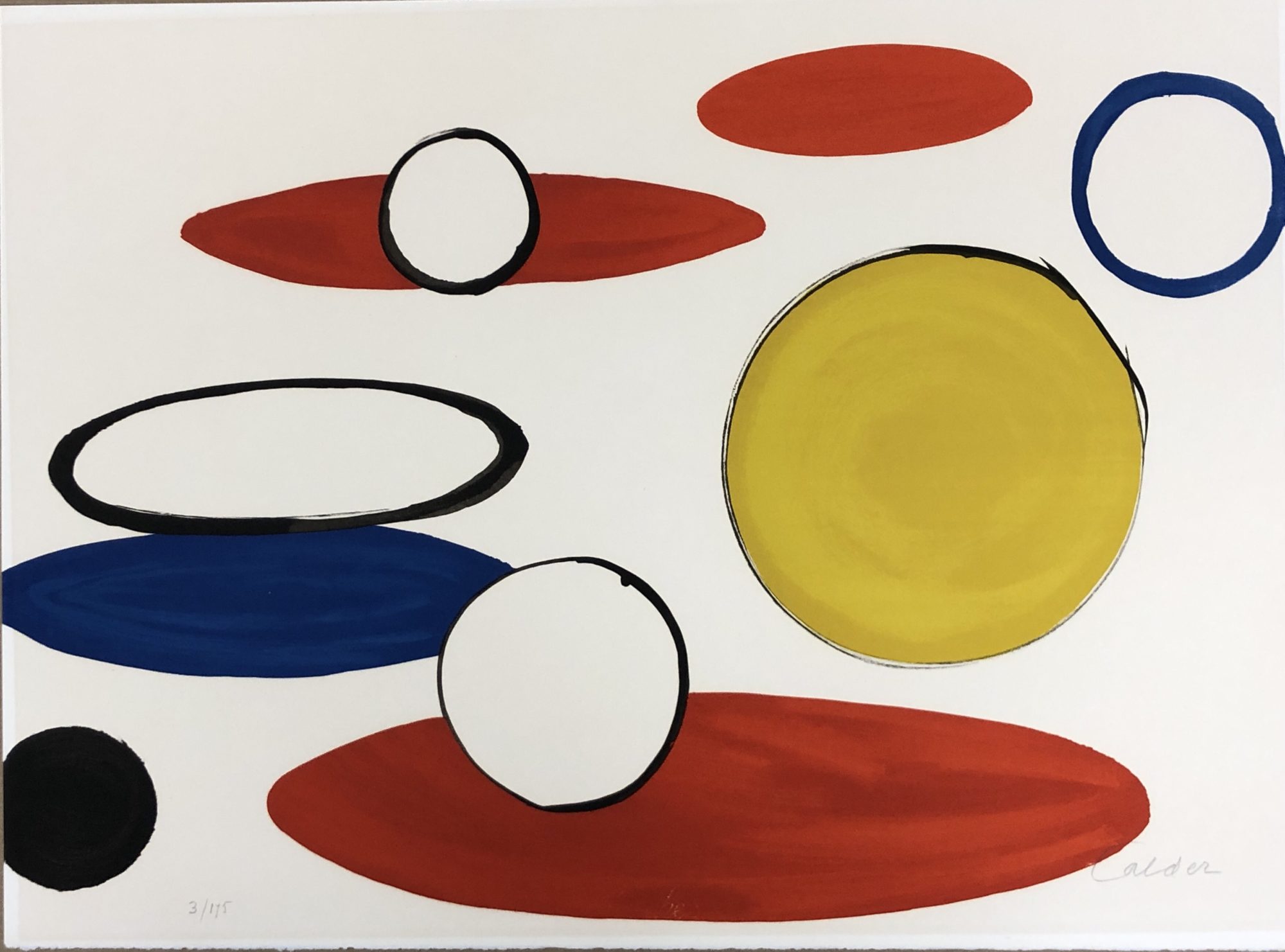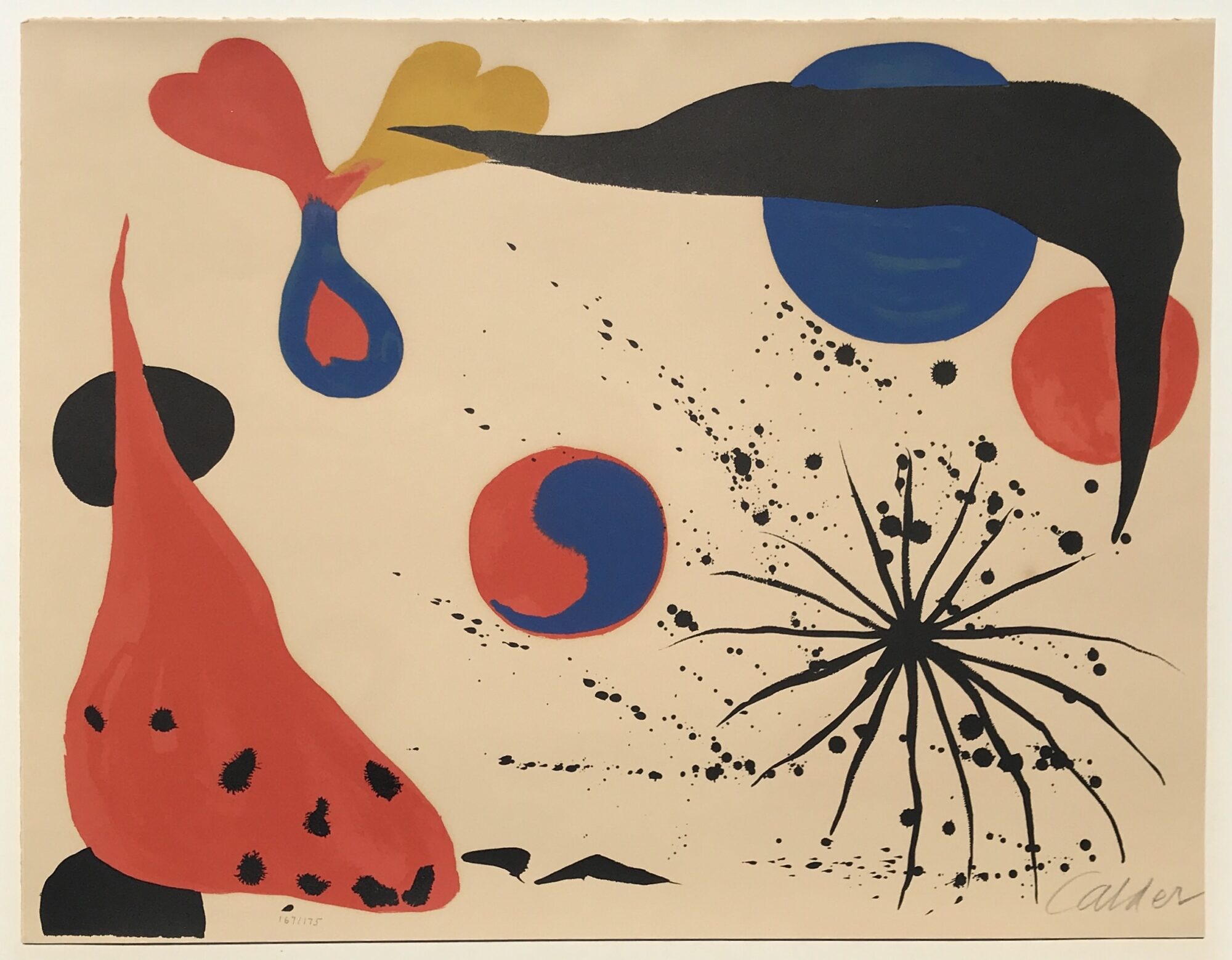Alexander Calder – Black Sun
Alexander Calder, Black Sun is an original lithograph made in 1969. It is signed in pencil in the lower right, and numbered in pencil in the lower left from the edition of 75.
Alexander Calder was born on July or August 22, 1898, in Lawnton, Pennsylvania, into a family of artists. In 1919, he received an engineering degree from Stevens Institute of Technology, Hoboken, New Jersey. Calder attended the Art Students League, New York, from 1923 to 1925, studying briefly with Boardman Robinson and John Sloan. As a freelance artist for the National Police Gazette in 1925, he spent two weeks sketching at the circus; his fascination with the subject dates from this time. He also made his first wire sculpture in 1925, and the following year he made several constructions of animals and figures with wire and wood. Calder’s first exhibition of paintings took place in 1926 at the Artist’s Gallery, New York. Later that year, he went to Paris and attended the Académie de la grande chaumière. In Paris, he met Stanley William Hayter, created his famous Cirque Calder, which he began performing in the fall of 1926, and exhibited at the 1927 Salon des Indépendants. The first show of his wire animals and caricature portraits was held at the Weyhe Gallery, New York, in 1928. That same year, he met Joan Miró, who became a lifelong friend. Subsequently, Calder divided his time between France and the United States. In 1929, the Galerie Billiet gave him his first solo show in Paris. He met Frederick Kiesler, Fernand Léger, and Theo van Doesburg and visited Piet Mondrian’s studio in 1930. Around this time, he also encountered James Johnson Sweeney, future director of the Guggenheim Museum, who would become a close friend and supporter.
| Title | Black Sun |
|---|---|
| Medium | Lithograph |
| Year | 1969 |
| Edition | 75 |
| Signature | Signed, numbered |
| Size | 29.5 x 43 (in) 75 x 109 (cm) |
| Price | SOLD |
Description
Alexander Calder, Black Sun is an original lithograph made in 1969. It is signed in pencil in the lower right, and numbered in pencil in the lower left from the edition of 75.
Alexander Calder was born on July or August 22, 1898, in Lawnton, Pennsylvania, into a family of artists. In 1919, he received an engineering degree from Stevens Institute of Technology, Hoboken, New Jersey. Calder attended the Art Students League, New York, from 1923 to 1925, studying briefly with Boardman Robinson and John Sloan. As a freelance artist for the National Police Gazette in 1925, he spent two weeks sketching at the circus; his fascination with the subject dates from this time. He also made his first wire sculpture in 1925, and the following year he made several constructions of animals and figures with wire and wood. Calder’s first exhibition of paintings took place in 1926 at the Artist’s Gallery, New York. Later that year, he went to Paris and attended the Académie de la grande chaumière. In Paris, he met Stanley William Hayter, created his famous Cirque Calder, which he began performing in the fall of 1926, and exhibited at the 1927 Salon des Indépendants. The first show of his wire animals and caricature portraits was held at the Weyhe Gallery, New York, in 1928. That same year, he met Joan Miró, who became a lifelong friend. Subsequently, Calder divided his time between France and the United States. In 1929, the Galerie Billiet gave him his first solo show in Paris. He met Frederick Kiesler, Fernand Léger, and Theo van Doesburg and visited Piet Mondrian’s studio in 1930. Around this time, he also encountered James Johnson Sweeney, future director of the Guggenheim Museum, who would become a close friend and supporter.
Additional information
| Title | Black Sun |
|---|---|
| Medium | Lithograph |
| Year | 1969 |
| Edition | 75 |
| Signature | Signed, numbered |
| Size | 29.5 x 43 (in) 75 x 109 (cm) |
| Price | SOLD |


